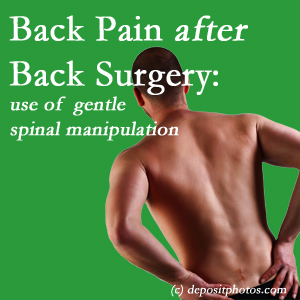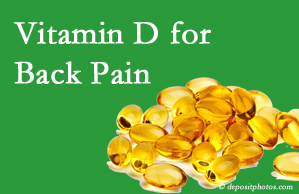
FAILED BACK SURGERY BACK PAIN RELIEF
Gentle spinal manipulation for back pain that stays or comes back after back surgery - sometimes called
persistent post-surgical pain or post-surgical continued pain - is demonstrating effectiveness. And Cox® Technic as offered at our Minster chiropractic clinic is receiving attention for its pain-relieving outcomes!
So have you undergone back surgery? Do you still suffer with back pain…or has it returned? You’re not alone, especially in wanting the pain gone. Some will choose more medical options like surgery or pain meds or physical therapy, etc. Others will try to find non-medical options like spinal manipulation. A recent meta-analysis of published data on the types of
spinal manipulation applied to treat back pain patients with persistent spine pain after lumbar surgery concluded that spinal manipulation practitioners chose to use potentially gentler non-thrust techniques –
85% chose flexion-distraction (aka Cox® Technic) – instead of thrust techniques.
(1) A published study of 69 post-surgical patients handled with Cox® Technic documented that in 11 visits over a 49 day treatment timeframe 81% of the patients reported more than 50% relief of pain. The mean percent of relief was 71.6% when the active treatment time was done and 70% at 2-year-follow-up. The relief continued!
(2) The frustration of back pain is understandable. The frustration of back pain after back surgery that was anticipated to eliminate it is even more frustrating. Minster Chiropractic Center offers Cox® Technic to decrease the pain…
and the frustration!Listen to this PODCAST with Dr. Gary Stefanick on The Back Doctors Podcast with Dr. Michael Johnson as he details the help his patient experienced with The Cox® Technic System of Spinal Pain Management.
TIP OF THE MONTH: Another Reason to Be Up on Your Vitamin D! LBP And Disc Degeneration
Higher vitamin D levels were documented to be linked with better physical performance in low back pain (LBP) sufferers with lumbar disc degeneration (LDD). Researchers measured vitamin D levels and muscle strength in 200 patients. Those low in vitamin D required more time in the gait speed, chair stand, and timed-up-and-go (TUG) tests. (3) Postmenopausal women with vitamin D deficiency (especially those with below 10 ng/mL which marked severe LDD and LBP) are noted to have LBP and LDD. If they smoked, had a high body mass index, osteoporosis, and no D supplementation, the moderate to severe pain was elevated. (4) Another report stated that frailty status and physical performance measures (gait speed and TUG) were significantly linked to vitamin D concentration. (5) Minster Chiropractic Center asks: What’s your vitamin D level? Time to check it!
CONTACT Minster Chiropractic Center
Make your next Minster chiropractic appointment with Minster Chiropractic Center soon.


